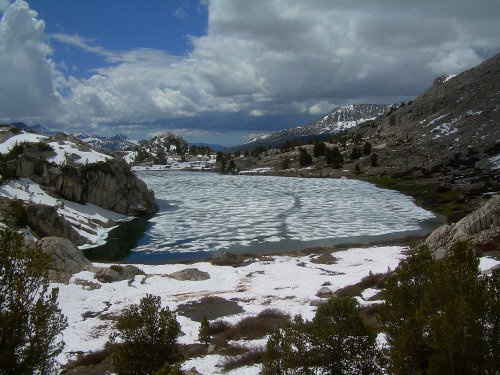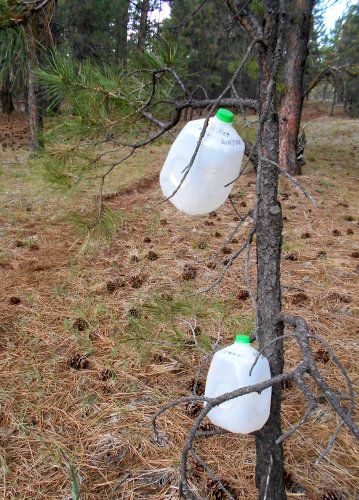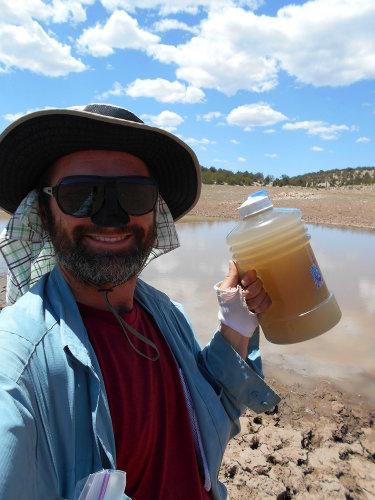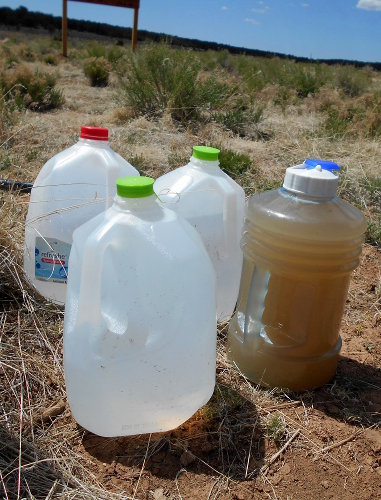Water Myths and Facts
You’ve likely been brainwashed with two important facts: (1) All surface water, no matter how pure or clean it appears, may be contaminated and unsafe to drink and (2) if you treat the water, you can make it safe to drink. You’ll find an element of truth in these statements, but they are misleading and it’s important to understand why. That’s what we’ll delve into below.
The Truth About Surface Water

Most surface water is perfectly safe to drink. I thru-hiked both the Appalachian Trail (twice!) and the Pacific Crest Trail—several thousand miles in the backcountry—and I did not treat any water. The number of times I got sick: zero. Yes, you read that correctly. I drank untreated surface water from hundreds of springs, creeks, rivers, lakes and ponds and never got sick.
You might write this off as anecdotal evidence and it is. My point, however, is that conventional wisdom is wrong. If I consumed surface water, on average, every 10 miles, I’d have consumed water from hundreds of different sources across 17 different states, and if Giardia infested even 1% of those water sources in dangerous numbers, I should have become sick several times over. I’ve met hundreds of thru-hikers over the years, and almost all of them have enjoyed untreated surface water and managed to avoid getting sick. Bad water does exist—it’s just not as common as conventional wisdom would lead you to believe.
And even if you do drink contaminated water, there’s a good chance it won’t cause any trouble. Your body is wired to fend off bacteria and infestations. There might be pesticides in the water you drink, but consumed in small quantities on rare occasions—you’ll probably suffer no short-term or long-term effects from it.
And from a logical standpoint, that makes sense. Bears and deer don’t sit around next to creeks pumping water through a filter, but you won’t see legions of them wandering around with violent diarrhea either. Wild animals undoubtedly do get sick from time to time, but if animals can thrive on untreated water, so can people.
I will point out, however, that a significant minority of people who backpack do suffer from diarrhea and other ailments, and many people will blame it on bad water. While that can be true, there are other (more likely) reasons. Your diet on the trail will change dramatically. You’ll eat a lot more dehydrated, lightweight and shelf-stable foods and far fewer fresh foods. You’re more likely to binge on pizzas and burgers when you get into town, and these sorts of sudden changes to one’s diet can be hard on your digestive system. Those unpleasant side-effects, however, are often assumed to be the result of water-borne bacteria when many times it is not.
All-in-all, most untreated surface water is perfectly safe to drink most of the time. The risk is real, but it is also far smaller than most people believe.
The Truth About Water Treatment Options

Despite wildly exaggerated claims of the dangers lurking in surface water, untreated water still carries a risk. But you have nothing to fear! Today you have an arsenal of weapons to combat bad water from high tech ultraviolet light that sterilizes water to filters that can scoop out contaminates over a hundred times smaller than the width of a human hair. At least that’s what the experts would lead you to believe. The truth, however, falls far short.
Portable water treatment options such as boiling water or using chemicals can and do kill living organisms in the water, but they won’t remove toxins, fertilizers and other unhealthy contaminants. Filters might remove non-organic contaminates—but only if the filter has pore sizes small enough to catch them.
And no treatment method is 100% effective. That high-tech, ultraviolet light might kill 99.99% of the germs that cause sickness, but that still leaves a few around to cause you plenty of intestinal distress. Read the small print—absolutely no devices will guarantee 100% effectiveness. A 99.99% effectiveness rate might sound good, but only one active cyst needs to make it through to grow and multiply in your intestines.
Filters have the additional problem of wearing out over time. They may start with a high effectiveness, but after years of use, filters may drop to an 80% effectiveness.
And that’s the dirty secret behind water treatment options: They cannot turn bad water good—they can only make it better. The most effective thing you can do to prevent water-borne illness is simply never drinking from contaminated water sources in the first place!
Why Experts Keep Getting It Wrong

When I tell people that I don’t treat my water, I often gets looks of shock and disbelief. That’s understandable—they’ve been brainwashed. They’ve probably read hundreds of books and articles describing the dangers of surface water and how to turn bad water into good with proper treatment—a consistent message reinforced by everyone from park rangers to guidebook authors. Surely so many experts can’t be wrong! They try to rationalize the discrepancy between the facts they “know” and the results I’ve reported. They’ll say I must have an iron stomach, or that I’ve been lucky....
And maybe they’re right, but I have no reason to think I’m a freak of nature nor has my life been full of an unusual amount of good luck. And, after about 10,000 miles of backpacking while drinking untreated surface water—I finally succumbed to my first (and thus-far only) water-borne illness. It will happen eventually, even for those who do treat their water. But the point is: both the danger of surface water and the effectiveness of water treatment options have both been over-hyped. I focus on acquiring good, quality water and—if I decide to treat it at all—treatment is a last resort.
But why? Why are these myths are so persistent and ubiquitous? I have two theories about why so many alleged experts will spout nonsense. It begins with two kernels of truth: (1) surface water can sometimes make people sick, and (2) the unaided eye cannot see microscopic contaminates. Both are 100% true and always have been true, but you’ll hear old timers talk about the old days when it was safe to drink untreated surface water as if something dramatic has changed since those good ol’ days.
It hasn’t! What has changed is that marketers and lawyers rode into town and changed perceptions. I’m not sure which came first, but they both played important rolls in brainwashing the general public.
Marketers want to scare the bejesus out of anyone venturing into the backcountry because fear is a phenomenally effective method of selling stuff you don’t need. They will exaggerate the dangers of surface water with one hand—then immediately sell you a solution to the problem with the other.
The most beautiful part of this tactic: no accountability. If you use their product and do not get sick, they’ll claim credit for the success even though you may have never consumed water from contaminated sources in the first place. If you do get sick, they’ll blame it on improper treatment, cross-contamination, person-to-person contamination or whatever convenient excuse presents itself. Whatever the cause of your sickness, they will never admit that their product failed you.
Not all the blame can be laid at the feet of marketers, however. Lawyers are a litigious bunch of people—after all, that’s their job! You can pull up thousands of books and articles extolling you to treat all water as if your life depended on it, but many of the very people who write these books and articles don’t follow their own advice. So why do they put in such disclaimers if they don’t actually believe it? Lawyers tell them to do it, and writers have nothing to lose by adding a disclaimer. If the disclaimers are accurate—great! If not.... no harm done. Better safe than sorry! Thus, every major publisher includes a disclaimer about the dangers of untreated surface water.
In a nutshell, almost everyone considered an authority on backcountry etiquette has a vested interest making you believe surface water is inherently dangerous but can be treated effectively.
The Take-Away

You might throw up your hands in frustration. If most surface water is safe to drink, why treat it at all? Especially if treatment options aren’t even 100% effective? But we can use this knowledge to our advantage.
For instance, because we know most surface water is perfectly safe to drink, we can focus our efforts into collecting only good water. While it is true we can’t see microscopic parasites, we can use a little common sense and know that a stagnant pool of water with a decomposing cow will likely have a few more parasites than a clear mountain spring. It’s not rocket science!
So the first step in avoiding water-borne illnesses is to identify good and bad water sources. Learn what to look for and consider what conditions the water flowed through before arriving at its current location.
If you drink only the best surface water, your chances of suffering from a water-borne illness are dramatically reduced—even if you choose not to treat the water all all.
So that’s what we’ll take a look at next: Identifying good and bad water sources.
